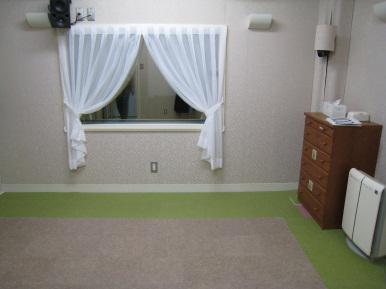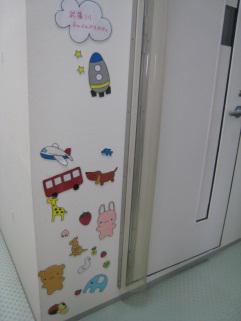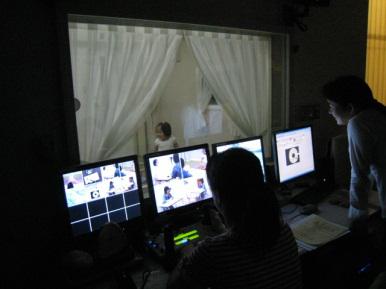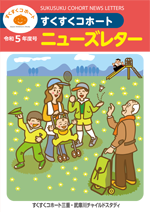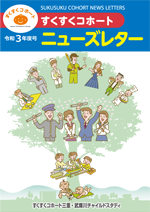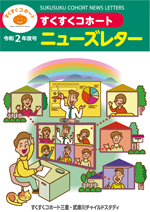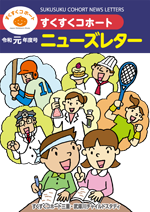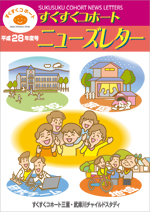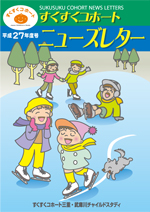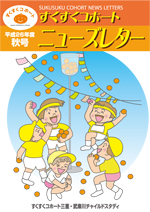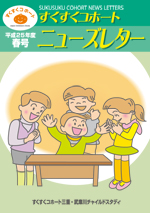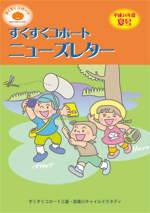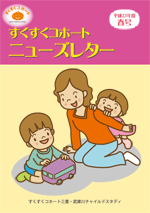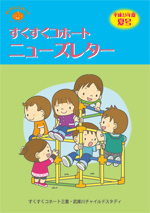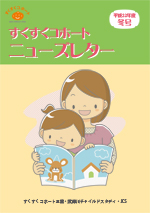 |
||
|
||||
Introduction This research project was launched with the intention to continue the follow up of children at Tsu City, Mie and Nishinomiya City, Hyogo for a further five years following gIdentification of Factors Affecting Cognitive and Behavioral Development of Children in Japanh, a part of the Japan Childrenfs Study Project gSuku-Suku Cohorth conducted from the fiscal year 2004 through 2008, focusing on the area of Brain-Science and Society implemented by Japan Science and Technology Agency (JST). Additionally, another three years have been added to this project and examination and tracing of children's developmental processes from infancy through school-age is made possible with the extension of the study, making this project a large scale project, studying from newborn babies to school-age children.
The institute for Educational Research of Mukogawa Womenfs UniversityECenter for the Study of Child Development has been conducting research for a wide range of childrenfs developmental process. The cohort study that has been carried out as Grant-in-Aid for Scientific Research (A) (B) aims to reveal how sociality during childhood is directly correlated with childrenfs biological factors and social factors that surround them. It is considered that child development consists of two main factors; that development is biologically regulated seen as developmental processes until they are born and the social environment that surrounds children as it represents language and social-role behavior. These factors are correlated and should be disclosed. To disclose these relationships, each cooperator should be regularly studied from their neonatal period. Our objective of this research is to elucidate how the sociality during childhood is developed by tracing childrenfs developmental processes throughout different stages in the cooperatorfs life.
In preparation for the launch of the observation project, a room on the fifth floor of the Institute Building of Mukogawa Womenfs University was renovated for developmental observation. Preparation and renovation of the observation room include the purchasing of necessary items, underlayment of mats with soft foam padding, and installment of flame retardant curtains. The completed observation booth, with an area of 3.72 square meters, is fully sound proofed and equipped with six video cameras, one omni-directional camera, microphones, a motion-capture system, and one-way mirrors. Creation of a homelike atmosphere is consciously implemented by unifying the observation room with light colors, installing curtains by the windows (one-way mirrors), and placing closets and other furniture around the room. Protective covers are placed over protruding areas in the room for safety purposes. The observation room is also furnished with a baby bed, diaper changing table, and spaces for breastfeeding.
Currently, many of the cooperators have become upper elementary students. These children have been participants in this study since infancy. Regarding observation during infancy, we provided participants with a recording-friendly environment to minimize the burden for them as listed below. This room was used after they entered elementary schools, so it became a memorable room for them so much so than they felt nostalgic when returning to revisit the recording-friendly environment. The recording room is located on the fifth floor of the institute building and furnished with flame retardant curtains and memory foam mattress. Not only six video cameras and a motion-capture system make the mechanical recording possible, but also a one-way mirror enables us to observe directory. The room is 3.72 square meters and soundproofed. There is furniture for kids to create a comfortable environment that the children felt safe in. For infant observation, equipment such as diaper changing table was placed.
The Mukogawa Child Study was offered approximately 100 applications from potential participants, and was able to gain approximately 60 pairs of mother-infant to take part in observation at our initial inquiry. Due to the nature of Nishinomiya as a commuter city in the Kansai area where relocation of residents occur frequently, approximately 5 participants were lost with each passing years due to the participants moving out of the area. As of fiscal year 2013, 2/3 of the participants from the initial participation continued their involvement in the study. Efforts have been made to encourage keeping participation for those moved close areas that are commutable, while encouragement of participation through written questionnaires are done with those who moved far from our area. Other reason for dropout aside from relocation of residents is the difficulty in traveling due to the birth of a sibling. Efforts have also been made to avoid further dropout as mentioned below.
The frequency in the implementation of the observation depends on the participantsf age. When the participants were at the age of 4 months, 9 months (13 months at optional in Mukogawa) and 18 months, observations were conducted twice a year. Observations were conducted once at intervals of 12-18months when the participants were 30 months, 42 months, 5 years, and 6 years old. When participants reach second grade in elementary school, WISC assessment will be administered along with the observation. The summary of the observation schedule is as follows.
The Mukogawa Child Study has put great efforts in finding effective ways to ensure the involvement of participants since keeping long-term relationship with participants playing an essential role in the implementation of our cohort project. Scheduling of observations is flexibly arranged in coordination with the motherfs schedule, especially working mothers, where staffs are made available on Saturdays and even holidays. Babysitting staff are also arranged for the siblings of participants. When fathers and grandparents accompany the participants, staff will ensure that they do not feel alienated by watching with and engaging in conversation relating to the child so to generate a sense of participation. Age appropriate storybooks and toys are presented to the participants after each observation as a token of appreciation for their continued participation. Mailing of bi-yearly newsletters to the participants is also implemented with the intention to provide participants with feedback information about study results as well as to retain high level of commitment and motivation for project participation.
In continuation from "Identification of Factors Affecting Cognitive and Behavioral Development of Children in Japan", as a part of the Japan Childrenfs Study project gSuku-Suku Cohorth implemented by the Japanese Science and Technology Agency (JST), Mukogawa Child Study was closely involved from the fiscal year 2004 through 2008. A 5 year follow up study was renamed as gA Cohort Study Examining the Genetic and Environmental Factors of Infants and Its Effect on Social Behavior in Childhood" supported with the funding (Grant-in Aid Scientific Research (A)) from fiscal year 2009 to 2013, and a three year follow up study named gA Cohort Study Examining Genetic and Environmental Factors on Infants and a Biological foundation in Child Social Behaviorh supported with the funding (Grant-in-Aid for Scientific Research (B)) from fiscal year 2014 to 2017. As the participants grew up, we have started the follow-up study and received the grant for gA Longitudinal Study for Elucidating the Developmental Mechanism of Social Ability in Adolescenceh (Grant-in-Aid for Scientific Research (B)) from fiscal year 2019 to 2021. All three grants are provided by Japan Society for the Promotion of Science (JSPS).
At our annual study meeting, Prof. Dr. G.J.P.Savelsbergh from Department of Human Movement Sciences, Vrije University, The Netherlands was invited as a guest advisor, and he provided an international peer review of the study.
Newsletters are issued twice a year to participants in order to provide with feedback information and to generate a sense of participation to maintain participantsf interest in continuing involvement in the project.
|
||||||||||||||||||||||||||||||||||||||||||||||||||||||||||||||||||||||||||||||||||||||||||||||||||||||||||||||||

Copyright © 2006-2024 Center for the Study of Child Development All rights reserved.


